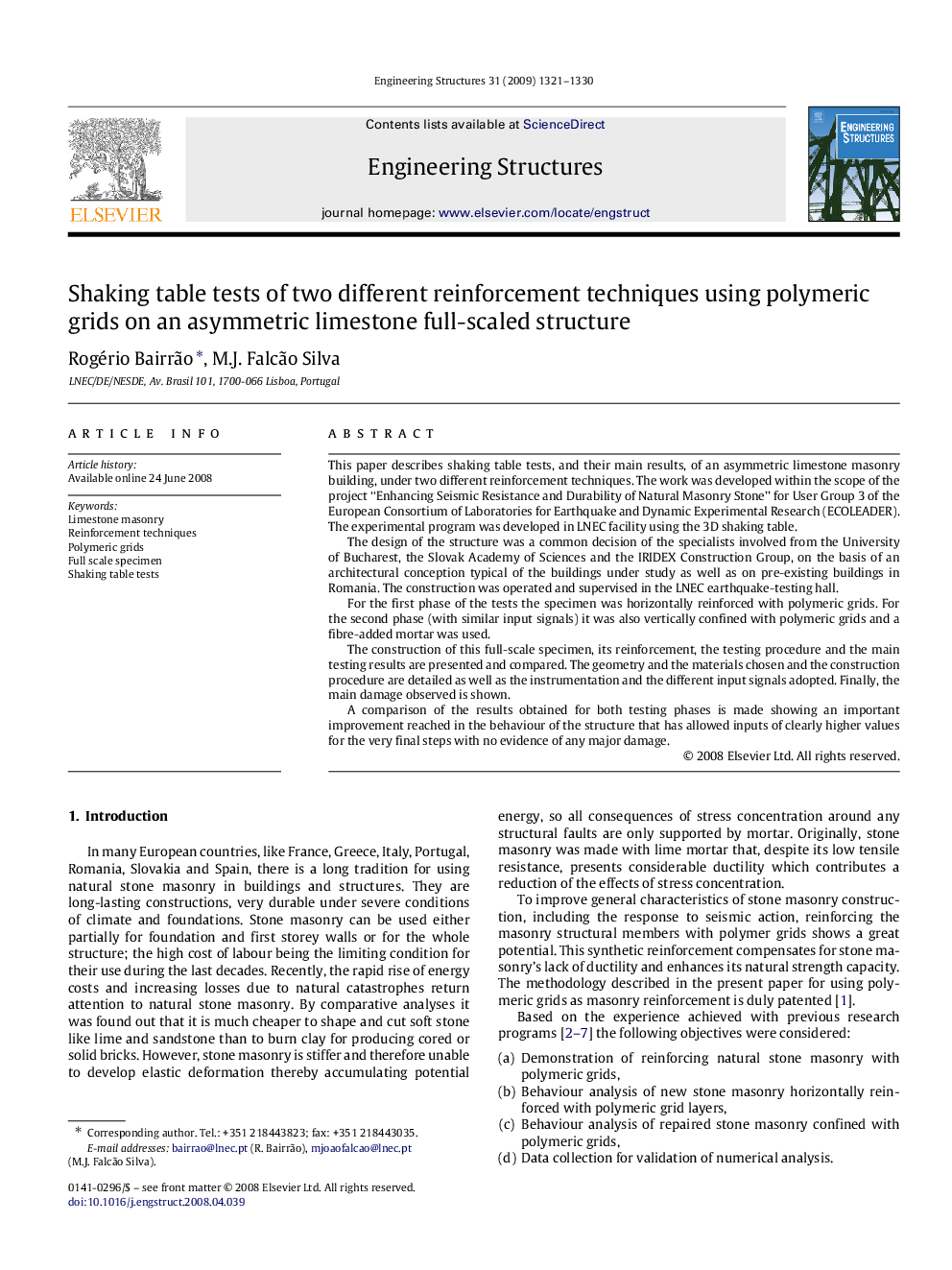| Article ID | Journal | Published Year | Pages | File Type |
|---|---|---|---|---|
| 268672 | Engineering Structures | 2009 | 10 Pages |
This paper describes shaking table tests, and their main results, of an asymmetric limestone masonry building, under two different reinforcement techniques. The work was developed within the scope of the project “Enhancing Seismic Resistance and Durability of Natural Masonry Stone” for User Group 3 of the European Consortium of Laboratories for Earthquake and Dynamic Experimental Research (ECOLEADER). The experimental program was developed in LNEC facility using the 3D shaking table.The design of the structure was a common decision of the specialists involved from the University of Bucharest, the Slovak Academy of Sciences and the IRIDEX Construction Group, on the basis of an architectural conception typical of the buildings under study as well as on pre-existing buildings in Romania. The construction was operated and supervised in the LNEC earthquake-testing hall.For the first phase of the tests the specimen was horizontally reinforced with polymeric grids. For the second phase (with similar input signals) it was also vertically confined with polymeric grids and a fibre-added mortar was used.The construction of this full-scale specimen, its reinforcement, the testing procedure and the main testing results are presented and compared. The geometry and the materials chosen and the construction procedure are detailed as well as the instrumentation and the different input signals adopted. Finally, the main damage observed is shown.A comparison of the results obtained for both testing phases is made showing an important improvement reached in the behaviour of the structure that has allowed inputs of clearly higher values for the very final steps with no evidence of any major damage.
